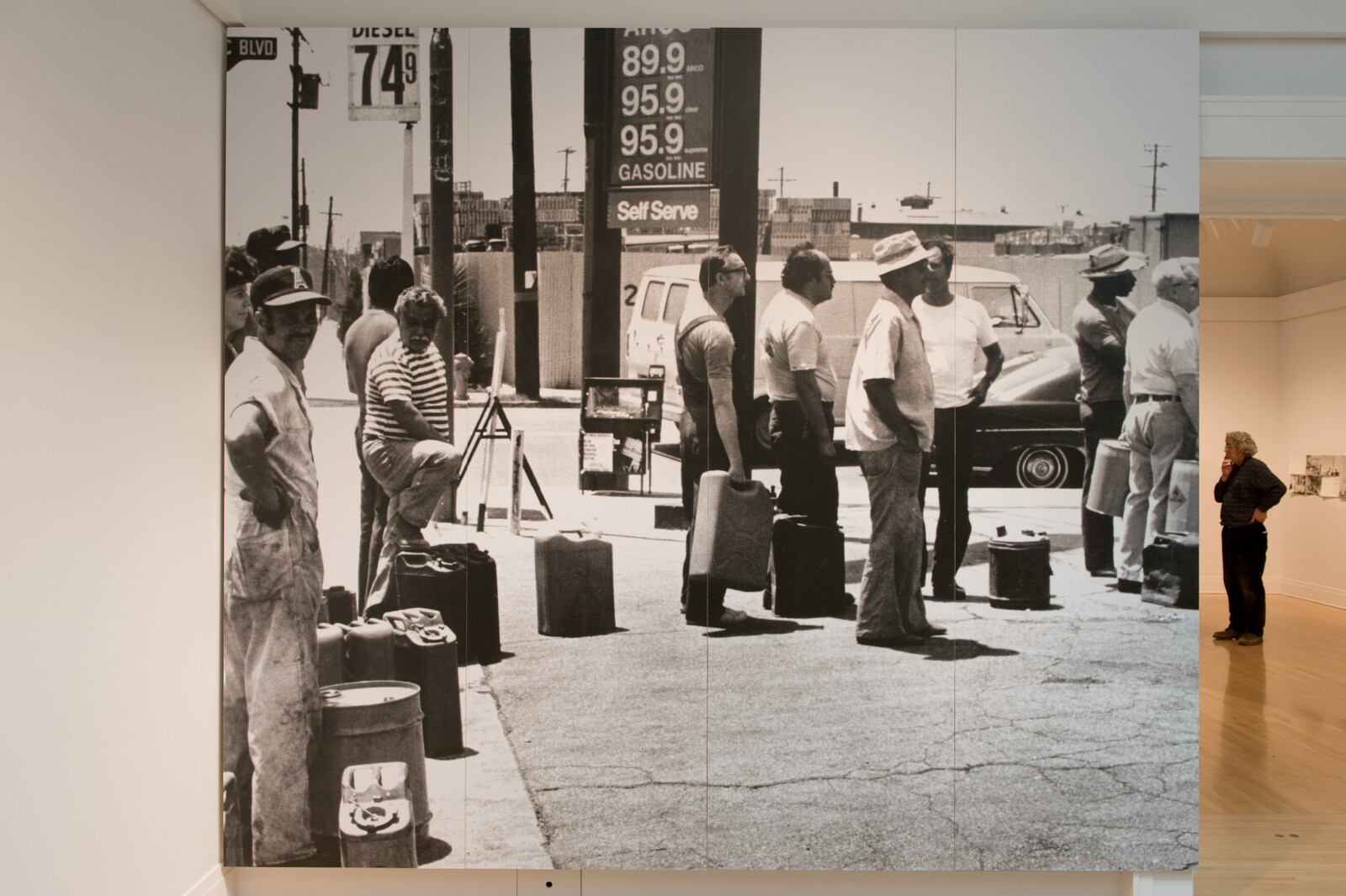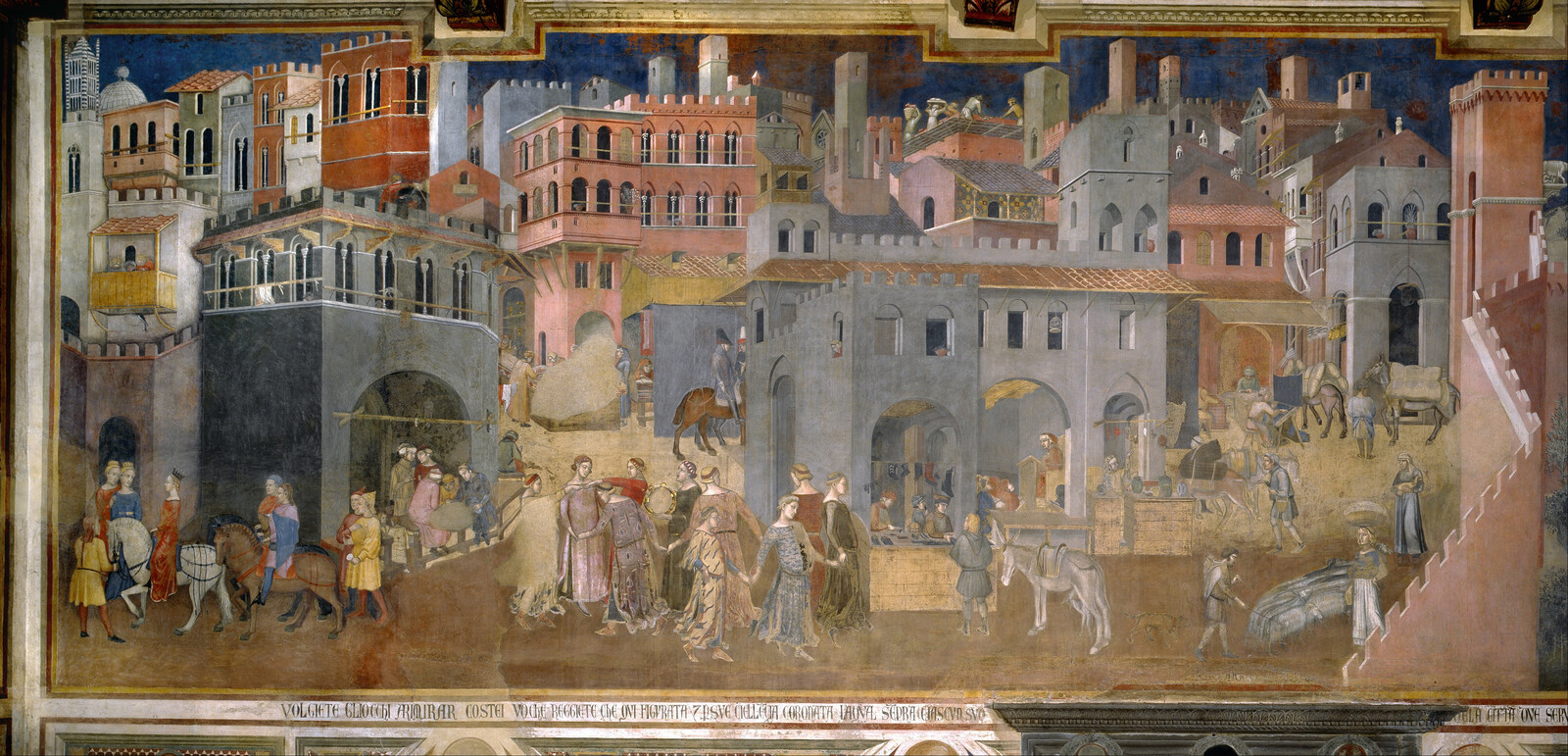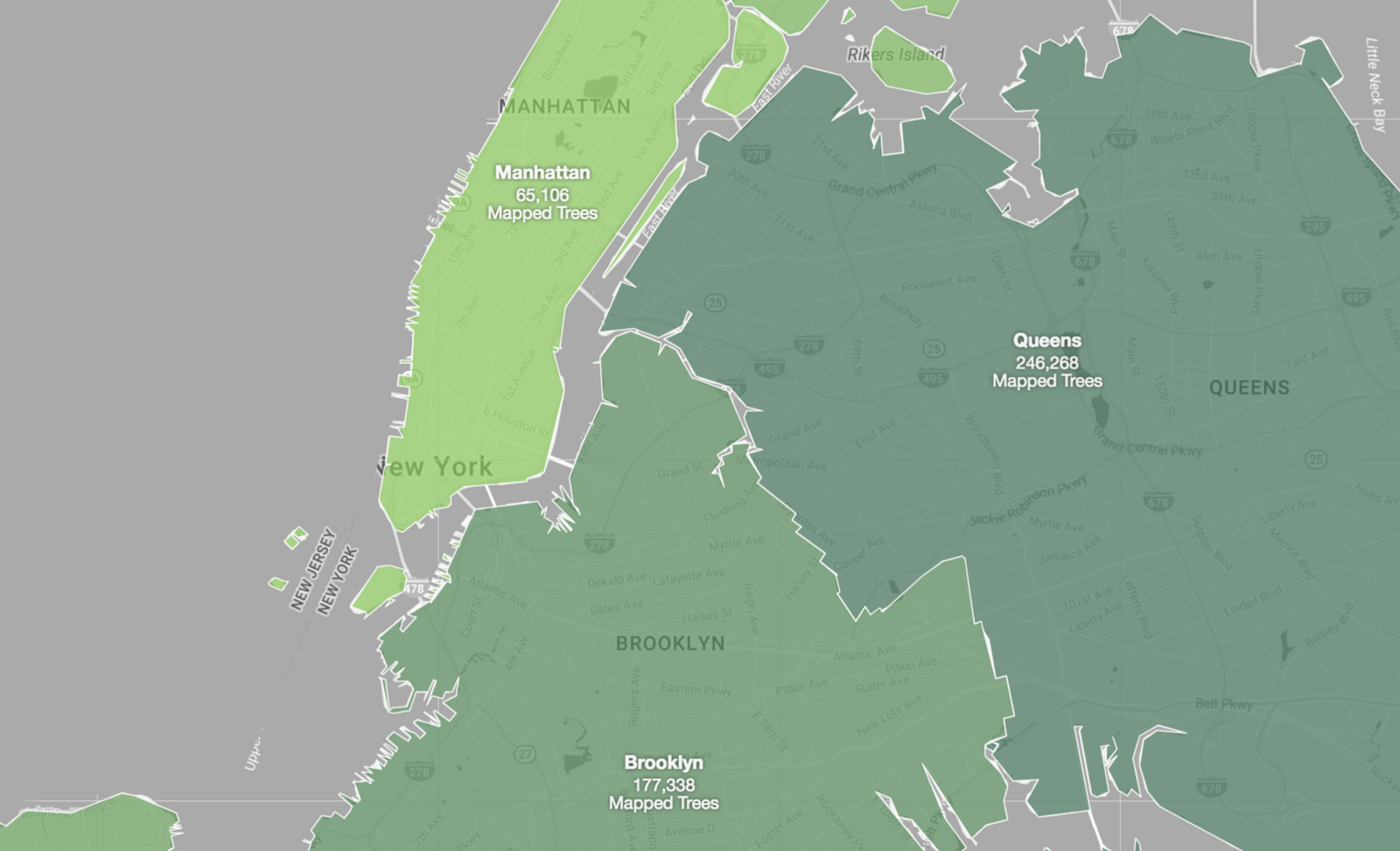Pan-Africanism had all the makings of doomed political movements: the manifestos and meetings, the impassioned speeches from initially idealistic leaders who later succumbed to corruption and authoritarianism, the petty schisms, and the ultimate dissolution. Yet despite its decline, Pan-Africanism’s ideals of emancipation, unity, and sovereignty remain in the collective African consciousness, informing political organizations and new cultural and artistic formations. The 18th Venice Architecture Biennale is one such formation. With it, its curator Lesley Lokko has gathered an array of practitioners from Africa and its diaspora with the aim of foregrounding the continent’s cultural production and creative potential.
Over half of the 89 participants to “The Laboratory of the Future” are from Africa or its diaspora. Of these, ACE/AAP, Olalekan Jeyifous’s expansive, Silver Lion-winning installation in the Giardini’s Central Pavilion contains the clearest references to Pan-Africanism’s history and concepts. The project is an Afro-Retrofuturist vision of an Africa united in the struggle to overcome the deleterious effects of colonial extraction. The continent’s environmental groups coalesce to form the African Conservation Effort (ACE), which mobilizes indigenous knowledge and scientific experimentation in a widespread effort to harness clean algae-based energy. This discovery leads to the establishment of The All-Africa Protoport (AAP), a low-impact, multinational network of air, land, and sea travel connecting Africa to the rest of its diaspora Underpinning this utopian vision is a deep reflection on the ideas developed throughout the varied history of the Pan-African movement.
An Abridged History of Pan-Africanism
As far back as the late-nineteenth century, proto-Pan-African figures in the diaspora such as Olaudah Equiano, Ottobah Cugoano, Toussaint Louverture, and Alexander Crummel were variously agitating for an end to slavery and colonialism, and for the sovereignty of the African continent. The Pan-African movement began in earnest with the first “Pan-African Conference” in London in 1900 and was organized by the Pan-African Association (PAA) under the leadership of Trinidadian lawyer Henry Sylvester Williams. The conference was attended by thirty-seven delegates and ten other participants including, famously, W.E.B. Du Bois, the life-long activist of Pan-African civil rights. Following the conference, more branches of the PAA were established in Trinidad, Jamaica, and the United States, and would go on to hold subsequent meetings as the Pan-African Congress (PAC). The first four were held in 1919 in Paris, 1921 and 1923 in London, and 1927 in New York, each focusing on contemporaneous issues relating to colonial rule in Africa and global inequality between Black and White people outside the continent.
The fifth PAC, which occurred in 1945 in Manchester, was unprecedented in its representation of attendees from within Africa. Their involvement was spurred on by the wave of independence struggles sweeping across the continent, while the intrinsically socialist Pan-Africanist movement receded in the US amidst the Red Scare. Thus, the stage was set for the rise of key intellectual and political leaders that would define Africa’s twentieth-century decolonial struggle. In attendance were delegates such as Kenya’s Jomo Kenyatta, Malawi’s Hastings Banda, and Ghana’s Kwame Nkrumah, all of whom would go on to lead their respective countries. Despite their influence, these men all have chequered histories, their leadership and reforms marred by controversy. Kenyatta’s rule was characterized by tribalism, corruption, and authoritarianism. Banda’s turn as Malawi’s first president brought social and economic progress, but during his thirty-year reign, he held a tight, strangely puritanical grip on the nation, turning it into a one-party republic, enforcing strict dress-codes for women, and banning long hair and beards in men. Nkrumah made sweeping reforms as Ghana’s first prime minister, turning the nation into a social democratic paradise, implementing a strong welfare state, and improving healthcare, education, and infrastructure. However, amid attempts to maintain power and guard against dissenters from within and without, his rule turned increasingly authoritarian, silencing his enemies, consolidating power, and declaring himself president for life until he was ousted in a coup and forced into exile in 1966. Nkrumah’s legacy is still looked upon favorably, however, and he is generally considered to be the father of Pan-Africanism.
In the years following the fifth Pan-African Congress, many African nations would gain their independence and individually seek to repair the damage that had been visited upon them by colonialism. However, in the late 1950s and early 1960s, Nkrumah—remaining a steadfast believer in the imperative of African unity and seeking to continue the tradition of the Pan-African Congress (which had not met since the pivotal 1945 meeting)—would arrange a series of meetings of the newly independent nations’ leaders under the banner of the “All-African People’s Conference.” Consensus within these conferences proved difficult to achieve, as the various delegates’ differing philosophies regarding African unity would lead to the formation of two distinct groups: The Casablanca Group and the Monrovia Group. The Casablanca group, which was composed of seven government states including Nkrumah’s Ghana, Morocco, Egypt, Libya, Guinea, Ethiopia, and Mali, advocated for the subsumption of all African states under a politically unified federation with a single currency and even a single Pan-African army. The Monrovia Group believed in a looser alliance of autonomous, independent states, favoring an ideology of nationalism and self-governance over a totalizing Pan-Africanism. The latter’s vision would prevail and in 1963 a compromise would be reached in Addis Ababa with thirty-two independent African nations forming the Organization of African Unity (OAU). Although the organization played a key role in the decolonization of the continent, Pan-African ideals of unity largely languished amid the internal differences, nationalist interests, and individual challenges of its members. The “United States of Africa” that Nkrumah envisioned was not to be.

Olalekan Jeyifous’s installation ACE/APP at the 18th International Architecture Exhibition, La Biennale di Venezia. Photograph by Matteo de Mayda. Image courtesy of La Biennale di Venezia.

Olalekan Jeyifous’s installation ACE/APP at the 18th International Architecture Exhibition, La Biennale di Venezia. Photograph by Matteo de Mayda. Image courtesy of La Biennale di Venezia.
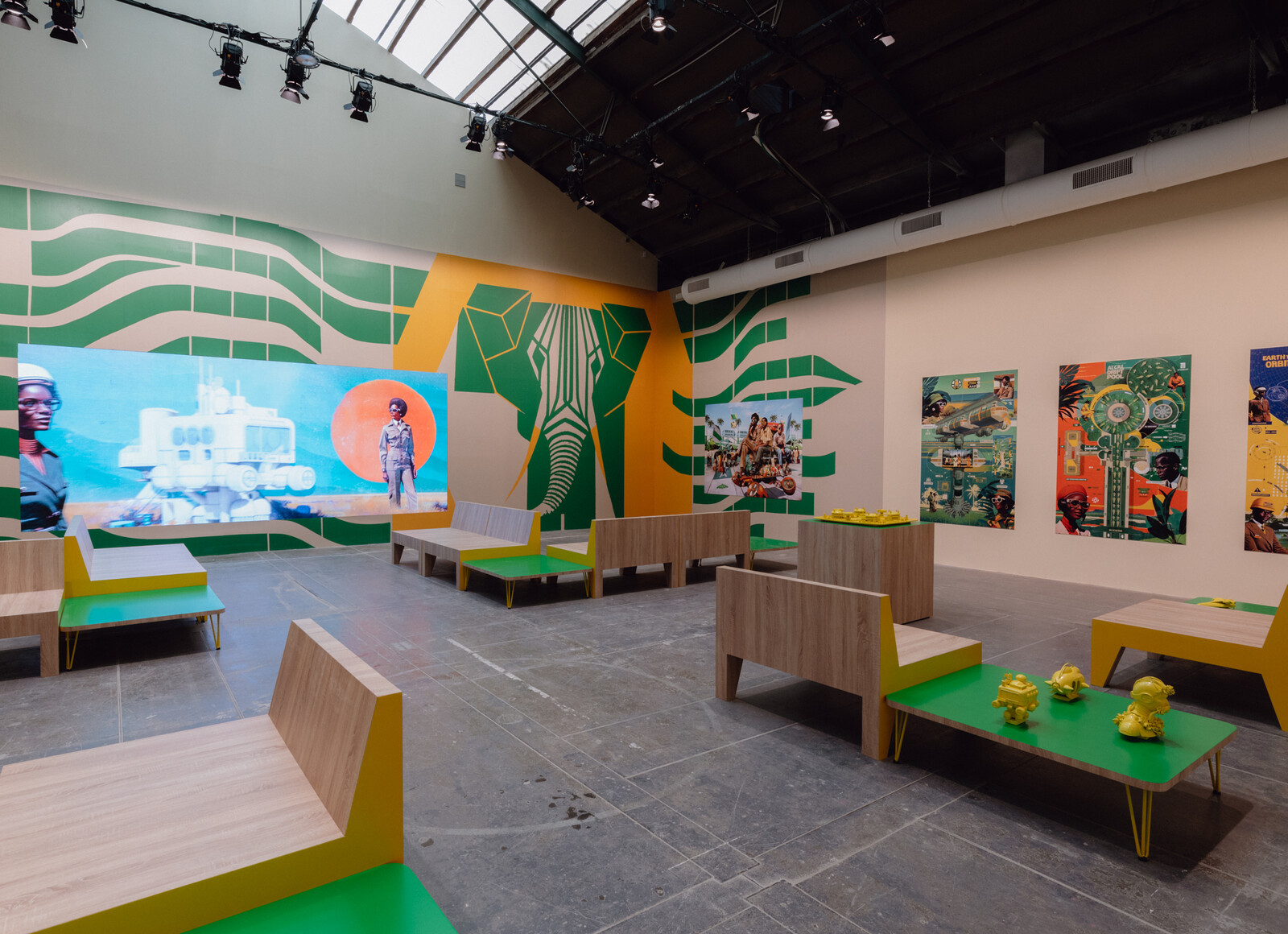
Olalekan Jeyifous’s installation ACE/APP at the 18th International Architecture Exhibition, La Biennale di Venezia. Photograph by Matteo de Mayda. Image courtesy of La Biennale di Venezia.

Olalekan Jeyifous’s installation ACE/APP at the 18th International Architecture Exhibition, La Biennale di Venezia. Photograph by Matteo de Mayda. Image courtesy of La Biennale di Venezia.
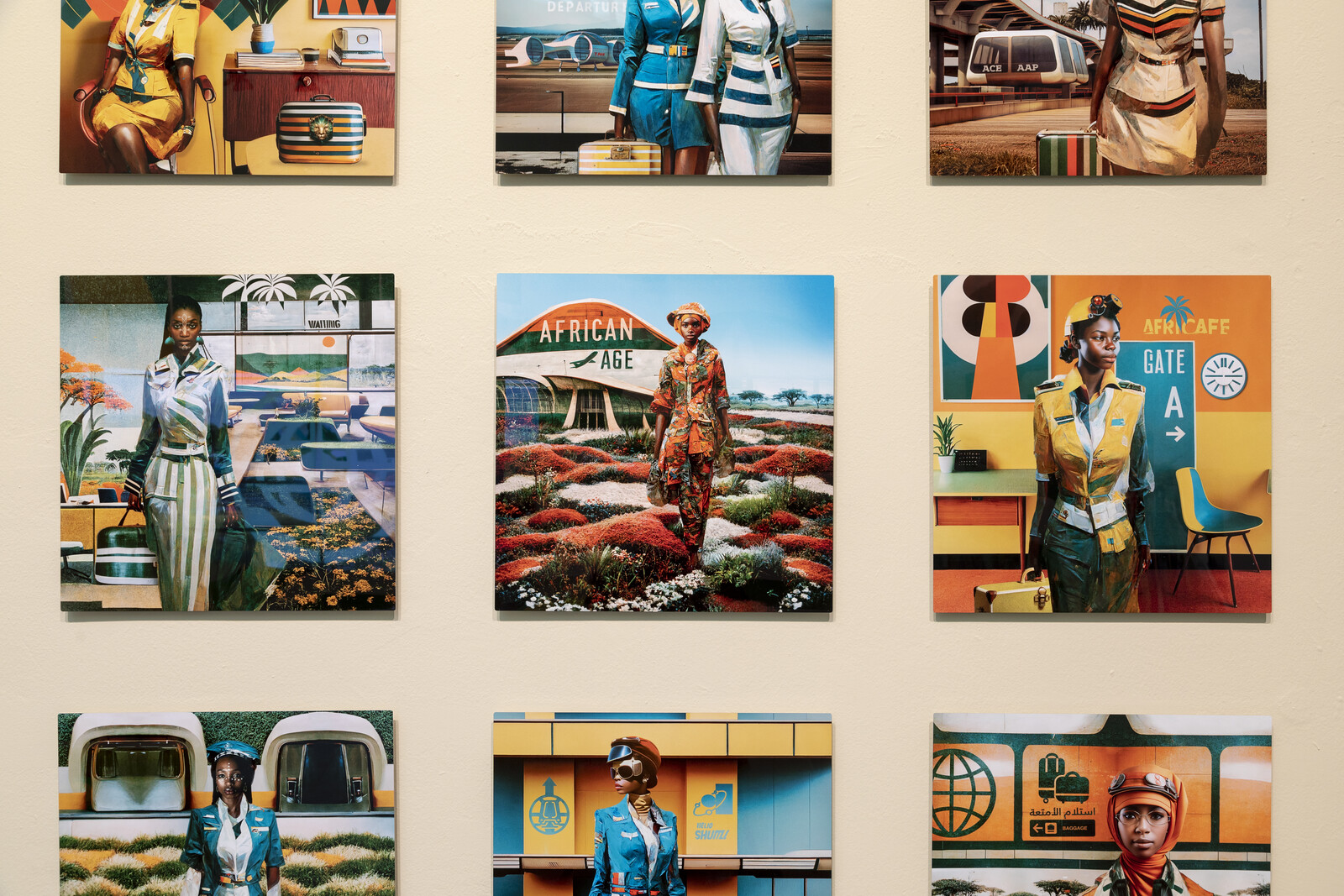
Olalekan Jeyifous’s installation ACE/APP at the 18th International Architecture Exhibition, La Biennale di Venezia. Photograph by Marco Zorzanello. Image courtesy of La Biennale di Venezia.
Olalekan Jeyifous’s installation ACE/APP at the 18th International Architecture Exhibition, La Biennale di Venezia. Photograph by Matteo de Mayda. Image courtesy of La Biennale di Venezia.
The New Pan-Africanism
ACE/AAP steps into this historical trajectory with a revision of Africa’s post-independence era. It is a gripping piece of historical fiction which sees the Pan-African effort materialize into a collective beacon of African unity rather than devolve into a failed project. The narrative, told mostly through the installation’s documentary film, takes account of the fault lines behind the decline of Pan-Africanism, and operates as a corrective to its shortcomings. The title of Jeyifous’s installation’s reads like an ironic evocation of the many acronyms the Pan-Africanists identified themselves by. The documentary film describes the All-Africa Protoport as comprising “freely associated sovereign governments,” a notion at odds with the wishes of Nkrumah and his ilk, and more in line with the proponents of the Monrovia Group. But creating a single supranational entity that represented the varied interests and cultures of all African nations proved untenable in the twentieth century. Thus, the member states of the Jeyifous’s African Conservation Effort, in a radical act of knowledge sharing and mutual interdependence, jointly develop and harness the energy production potential of algae towards the improvement of the continent as a whole while retaining their individual identities.
Given that any ongoing process of decolonization should recognize the ecological, as well the political, economic, cultural damage of colonial extraction on the continent, the new Pan-Africanism that ACE/AAP depicts also embraces decarbonization. Jeyifous incorporates an explicit environmental agenda, one suited to the context of Africa, in which scientific advancement in combination with indigenous knowledge transforms algae—abundant in the shorelines and riverine areas throughout the continent—into a clean, renewable source of energy. This environmental thinking was largely missing from the twentieth-century’s Pan-Africanist rhetoric, which had a larger focus on industrial productivism and economic progression rather than ecological repair. But today, the driving force for any new Pan-Africanism must be the twin mandate of decolonization and decarbonization—the leitmotif of this year’s biennale.
AAP has a real-world antecedent: Air Afrique, a Pan-African airline owned and operated by a group of eleven West African francophone countries from 1961. The airline ran for several decades until a perfect storm of mismanagement, macro-economic issues, and the post-9/11 decline of the aviation industry forced the airline to shut down in 2002. During its run, Air Afrique realized the utopian vision of intra-continental collaboration and international connectedness that ACE/AAP embodies. The Pan-African Realist aesthetic of Jeyifous’s project is also reminiscent of the advertisements and marketing literature of Air Afrique, with its smiling, satisfied passengers, and fastidiously dressed pilots and hosts; all elegant and poised, brimming with post-colonial pride.1 However, beneath the apparent optimism of the installation lies the recognition that any world-building exercise of this magnitude is not without its complexities, tensions, and even conflicts. Jeyifous is not oblivious to the possible pitfalls of his project. The narrative highlights concerns that the AAP represented a Neo-African expansionist project, this time perpetrated from within by the organization’s member nations; a new Scramble for Africa.2 Its ever-expanding network of protoports established in coastal areas and augmented landscapes also risks the loss of local traditions and cultural institutions.
This problematic is left open-ended: at the time we encounter this narrative, ACE is yet to balance its ambitions for sustainable development with a substantive environmental conservation strategy. The building of a protoport on the Barotse floodplain—a site of great conservation value and home to the indigenous Lozi people of Western Zambia—further exacerbates these concerns. Jeyifous, cognizant of the complicated history of Africa’s postcolonial development, is hesitant to provide any quick answers. What is clear is that these potential fractures can only begin to be remedied once personal interests and political ambition give way to a collective will, representative of the needs of the African people.

Dele Adeyemo’s A Dance of the Mangroves at the 18th International Architecture Exhibition, La Biennale di Venezia. Photograph by Marco Zorzanello. Image courtesy of La Biennale di Venezia.

Cartografia Negra’s Volta Negra plus Lambe-lambe (2019) at the 18th International Architecture Exhibition, La Biennale di Venezia. Photograph by Joao Lopes. Image courtesy of La Biennale di Venezia.

Gbolade Design Studio’s Regenerative Power at the 18th International Architecture Exhibition, La Biennale di Venezia. Photography by Marco Zorzanello. Image courtesy of La Biennale di Venezia.
Dele Adeyemo’s A Dance of the Mangroves at the 18th International Architecture Exhibition, La Biennale di Venezia. Photograph by Marco Zorzanello. Image courtesy of La Biennale di Venezia.
There are Pan-African expressions to be read elsewhere in “The Laboratory of the Future.” Dele Adeyemo’s installation A Dance if the Mangroves is a spiritual ode to the mangrove forests found in the coastal areas of Lagos, Nigeria. The project’s exhortation of the carbon sequestering potential of these trees echoes ACE/AAP’s implicit call to look to regional environmental affordances in the pursuit of the continent’s decarbonization. Cartographia Negra by Brazilian collective Root City is a research project examining the legacy of slavery and unearthing the erased histories and identities of Afro-Brazilians in São Paulo. The Brazilian national pavilion, which won the Golden Lion, also references the philosophies, narratives, and architectural traditions of the nation’s Indigenous and Afro-Brazilian peoples. Similarly, Gbolade Design Studio’s Regenerative Power takes a community center in Brixton, London as a case study of the cultural identities of West Indians in the diaspora as expressed through institutions such as a dominoes club and a soup kitchen. The naïve and ill-founded back-to-Africa movement of some of the early Pan-Africanists failed to reckon with the diasporic reality of African people worldwide, as though the earth-shattering effects of the transatlantic slave trade could be reversed.3 These projects conversely seek to legitimize African life in the diaspora.

atelier masōmī’s Process at the 18th International Architecture Exhibition, La Biennale di Venezia. Photograph by Matteo de Mayda. Image courtesy of La Biennale di Venezia.

Kéré Architecture’s Counteract at the 18th International Architecture Exhibition, La Biennale di Venezia. Photograph by Matteo de Mayda. Image courtesy of La Biennale di Venezia.

Koffi & Diabaté Architectes’s Living Differently: Architecture, Scale and the New Core at the 18th International Architecture Exhibition, La Biennale di Venezia. Photograph by Matteo de Mayda. Image courtesy of La Biennale di Venezia.

Studio Barnes’s Griot at the 18th International Architecture Exhibition, La Biennale di Venezia. Photograph by Marco Zorzanello. Image courtesy of La Biennale di Venezia.
atelier masōmī’s Process at the 18th International Architecture Exhibition, La Biennale di Venezia. Photograph by Matteo de Mayda. Image courtesy of La Biennale di Venezia.
Architecture practices Atelier Masomi, Kere Architecture, and Koffi & Diabate Architectes exhibit drawings, images, models, and mock-ups of various projects responding to the cultural, and ecological contexts of sites in Niger, Burkina Faso, and Ivory Coast. Meanwhile, Griot by Chicago-based Studio Barnes is a multimedia decolonial project critiquing orthodox Western conceptions of beauty, and tectonics in architectural design. Barnes reconciles these epistemes with the frequently elided contributions of Africa to their development. The Griot—a West African storyteller—becomes the metaphoric lens through which this history is retold.
These individual expressions resonate throughout the continent and its diaspora. Taken together these and the many more projects featured in this year’s Venice biennale comprise a new Pan-Africanism. Not singular and totalizing but multifarious, each with a renewed impetus to examine, express, and where necessary, re-tell Africa’s stories, ushering it—on its own terms—into the world stage.
The Africa Union and Agenda 2063
In 2013 the African Union (AU, renamed from the Organization for African Unity in 2002) met in Bahir Dar, Ethiopia to celebrate the Golden Jubilee of the formation of the OAU. The AU’s chair, Dr. Nkosazana Dlamini-Zuma gave an address in the form of a letter to Kwame Nkrumah, an “email from the future,” from the year 2063. In this imagined future, Dr. Zuma tells Nkrumah that his dream has come true: in 2051 all African countries joined to form the Confederation of African States, ending the decades-long debate on the form that African unity should take. The letter does not detail the organizational and power structure of the confederation, but it does highlight the key forces that led to the creation of this utopia, forces which echo the key themes of “The Laboratory of the Future”: the youth and dynamism of Africa, the productive potential of its natural resources, and the emergence of the continent as a global powerhouse. The letter made further mention of the mobilization of indigenous knowledge towards a widespread agrarian revolution, the development of abundant blue and green economies to address issues of hunger and sustainable development, and the formation of Pan-African infrastructures of manufacture, trading, and transport—ideas redolent of Jeyifous’s own propositions.
The letter acts as a prologue to Agenda 2063, the African Union’s strategic framework for the economic, political, and environmental development of Africa that is described as a “concrete manifestation of the Pan-African drive for unity, self-determination, freedom, progress and collective prosperity.”4 The road to the 2063 that the AU imagines will undoubtedly be filled with much of the same challenges that Pan-Africanists of the previous generation faced, with the added challenge of the climate crises that disproportionately affect the continent and the rest of the Global South. What Lesley Lokko has achieved with this year’s Biennale is to create a space for some of Africa’s great minds and emerging voices to convene and explore new conceptions of space, material expression, and forms of building and city-making. To collectively address some of the continent’s challenges, while speculating on its possible futures. This convergence is comparable to, yet wholly divergent from, the tradition of the Pan-African Congresses, representing a new dimension to the Pan-African path to Africa’s actualization.
I am using the term ‘”an-African Realist” here as a loose reference to Socialist Realism, the aesthetic of art popularized in much of the Soviet Union characterized by idealized imagery and the visual espousal of the values of Soviet life. Pan-African Realism bears an aesthetic, and moral, if not political similarity to its Soviet counterpart.
“Scramble for Africa” is the term famously used to describe the widespread colonization Africa major Western European nations including France, Germany, Great Britain, Portugal, and Belgium. The process was inaugurated at the Berlin Conference of 1884, where the attending nations carved out Africa into various colonies.
Ideas associated with the back-to-Africa movement developed in the diaspora throughout the eighteenth and nineteenth century. They were based on belief in the repatriation of formerly enslaved and free Blacks—especially those in North America—to Africa. The movement was supported in particular by the controversial black separatist Marcus Garvey, who went as far as incorporating the Black Star Line—a shipping and passenger company intended to transport African Americans back to Africa.
“Agenda 2063: The Africa We Want,” African Union. See ➝.
Positions is an independent initiative of e-flux Architecture.
This essay was commissioned as part of a collaboration between e-flux Architecture and alumni from the fourth cohort of New Architecture Writers to publish reviews of the 2023 Venice Architecture Biennale and Lesley Lokko’s 18th International Architecture Exhibition, “The Laboratory of the Future.”

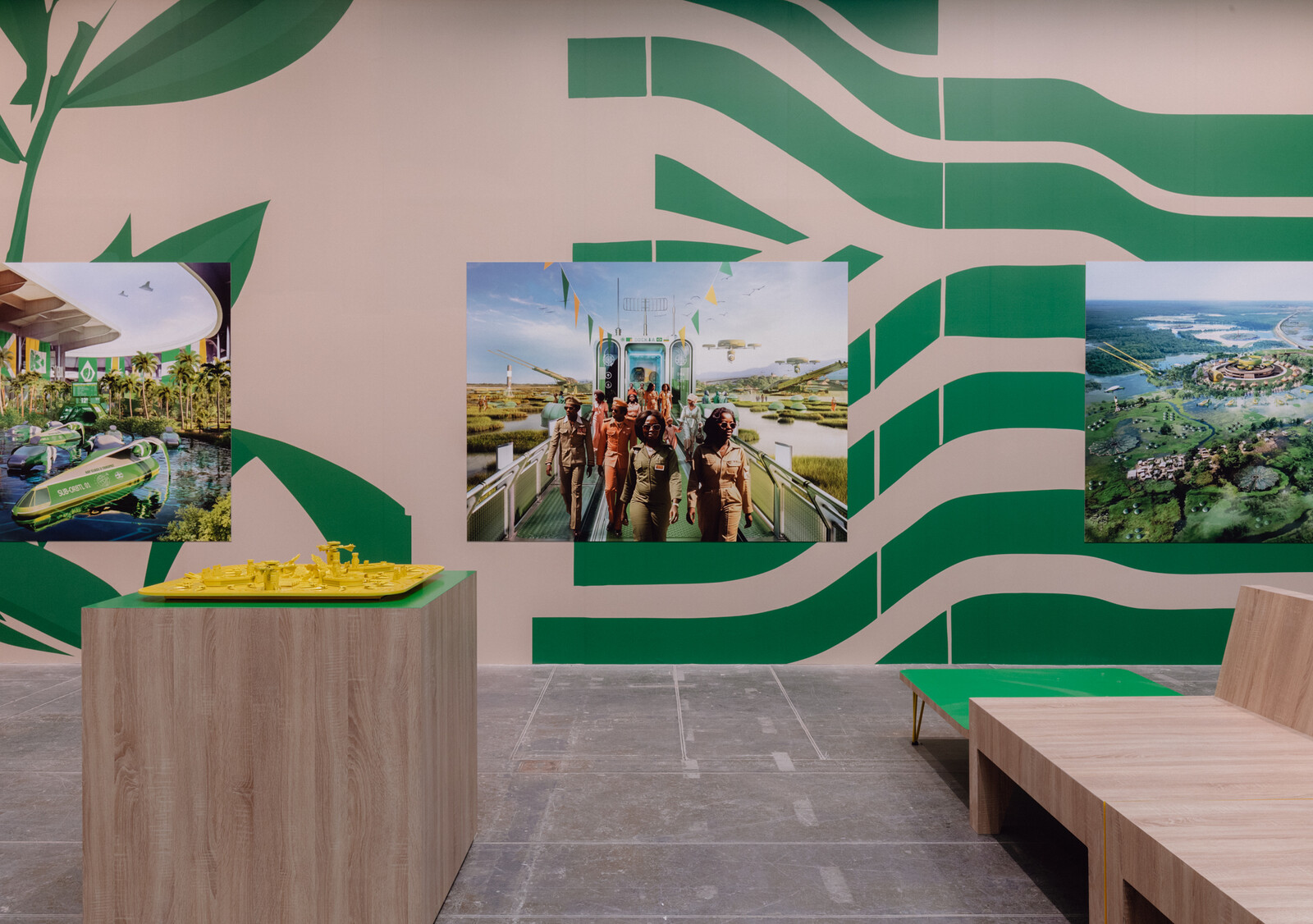

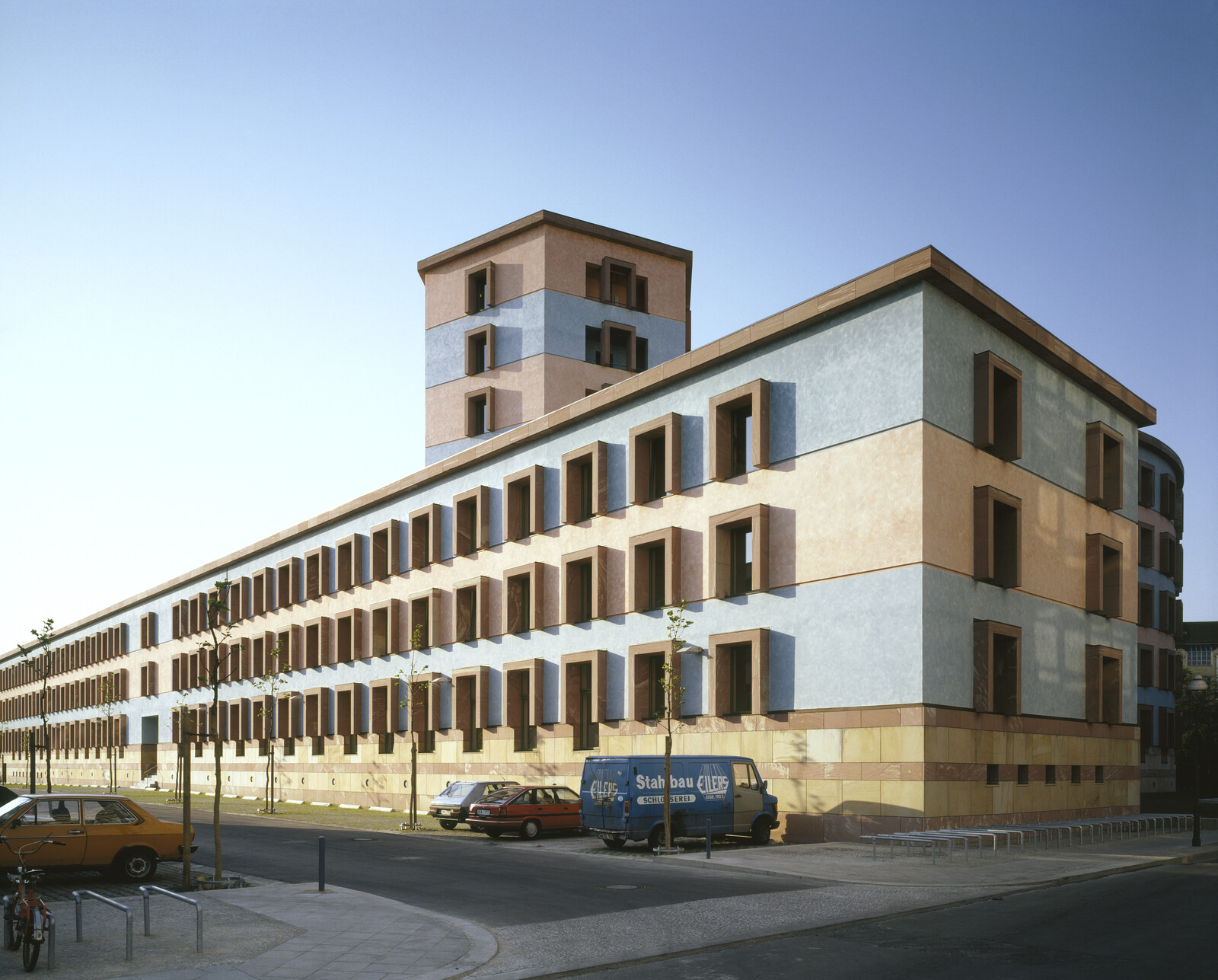






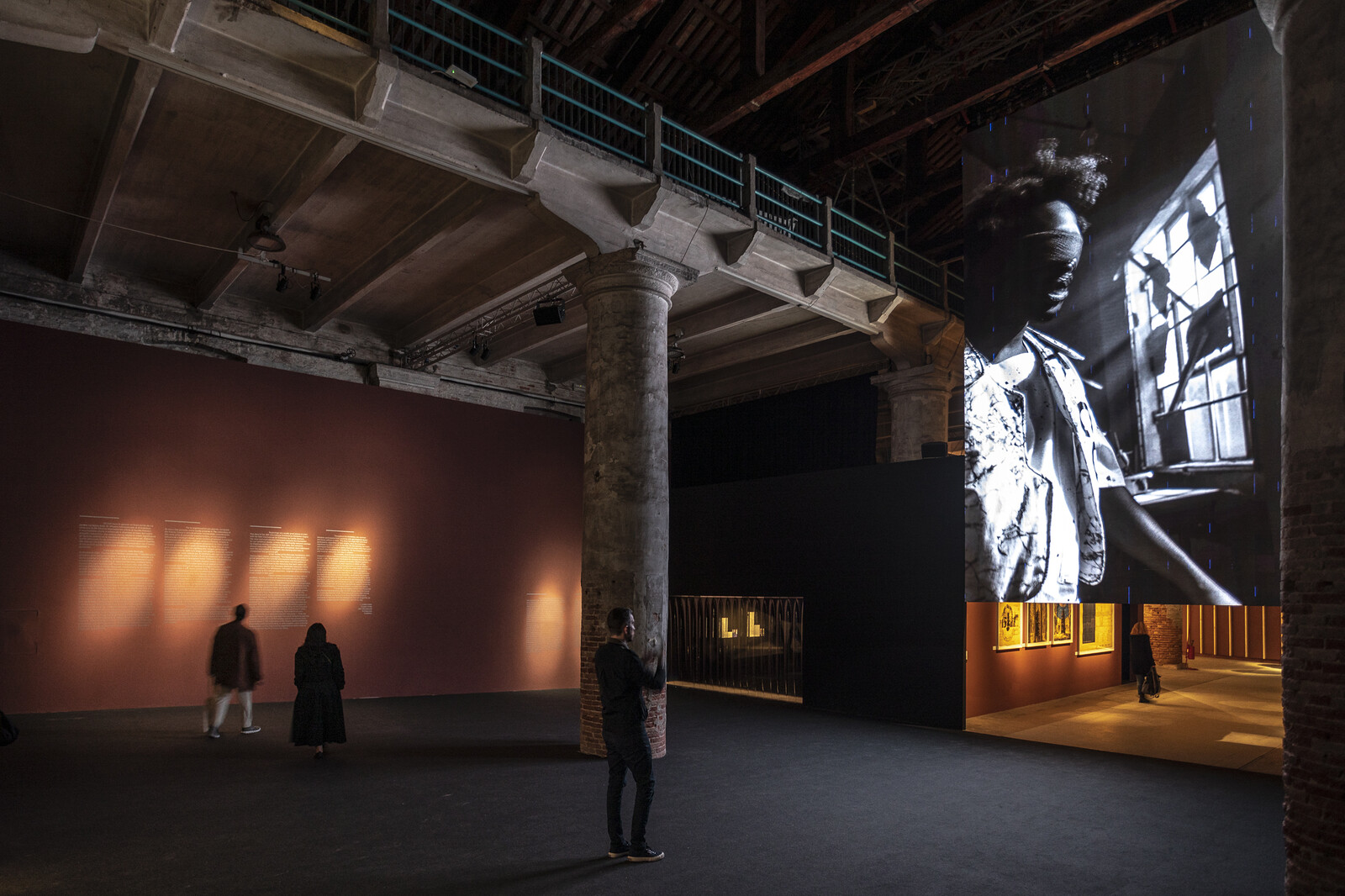







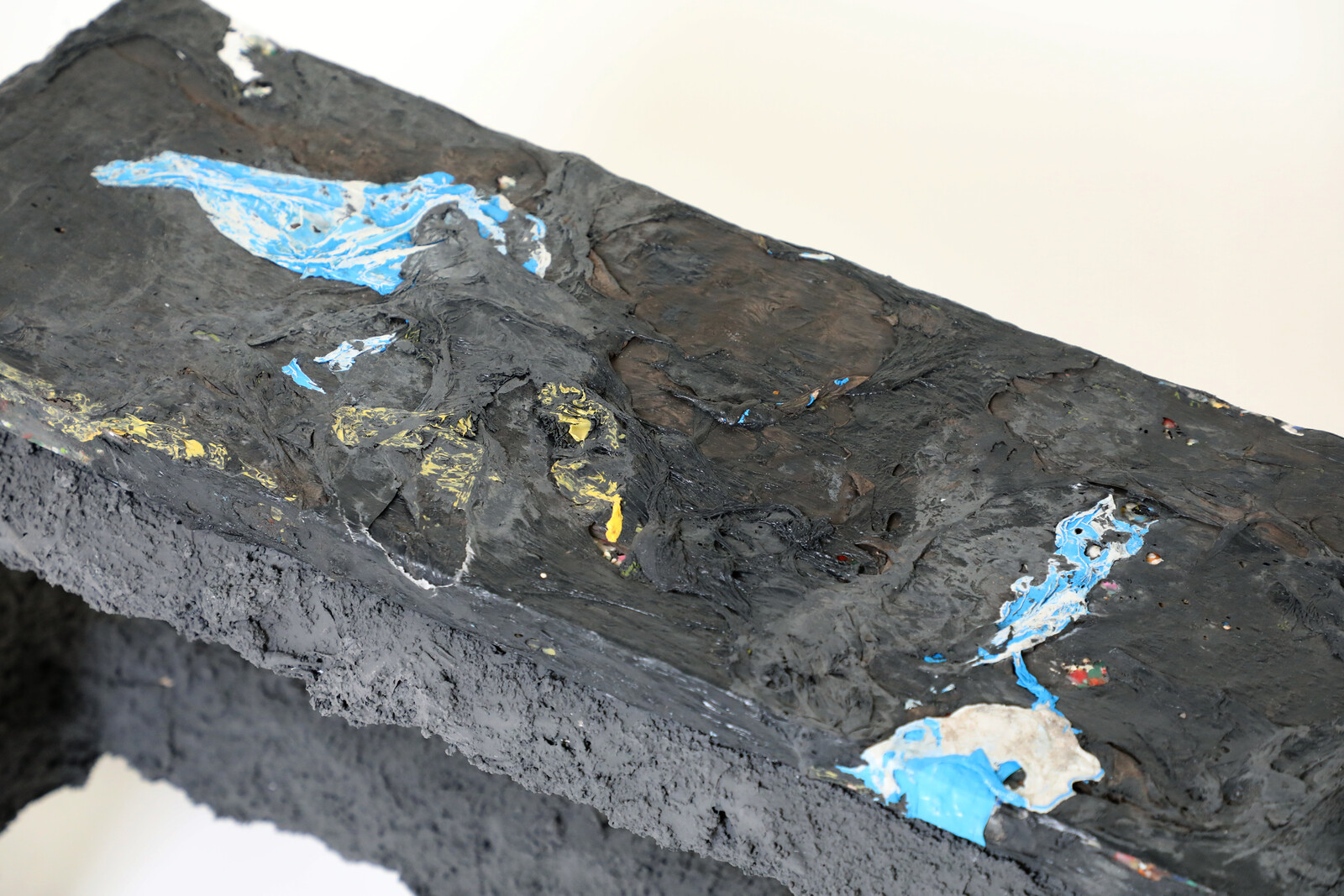





(2014).jpg,1600)











,-2003,-srgb.jpg,1600)





